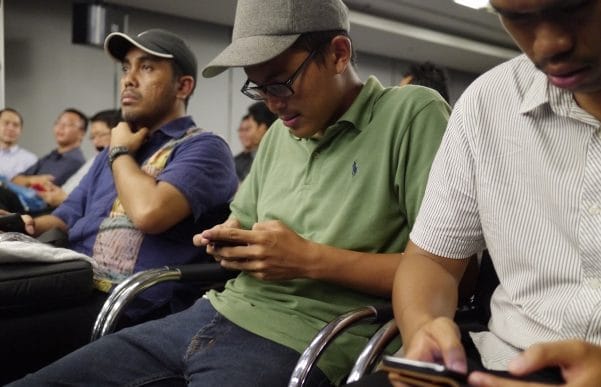Update: the behavioral playbook is now available here.
Cashing a check seems like a simple task. But in practice, it involves many small, hassle-ridden steps that take time and energy: planning when to go, finding a nearby ATM or retail location, remembering to bring the check, traveling to the location, and waiting in line. Fortunately, most banks now offer mobile deposit, allowing customers to deposit checks using their cell phone cameras at any time of day, from anywhere. Yet, the majority of Americans do not take advantage of this convenient technology.
Boosting the adoption of digital services that help people build savings, reduce debt, and manage cash flows could support greater financial health for the 138 million Americans who are struggling financially. That’s why, with support from JPMorgan Chase & Co., we’re creating a behavioral playbook for providers of digital financial services. The playbook will guide fintech startups, non-profits, credit unions, and traditional financial institutions to design for the unexpected barriers that prevent low- and middle-income consumers from adopting useful digital tools.
The challenges surrounding technology adoption aren’t novel, of course, and research on the problem goes back decades. However, most of this research is based on the assumption that beliefs influence attitudes, attitudes lead to intentions, and intentions generate behavior. We take a different angle, because we know from behavioral science that decision-making doesn’t follow such a linear (or logical) path. For instance, people may realize they could use the help of a budgeting app when they’re running short on cash – exactly the time they’re preoccupied with making ends meet and don’t have money to budget, let alone the bandwidth to find and adopt a whole new way of tracking expenses. Later, when time and money aren’t so scarce, getting a budgeting app doesn’t feel as urgent and the task can easily be put off.
One example of the application of behavioral insights to the adoption of digital financial tools comes from our work with Chicago-based Alliant Credit Union. We partnered with Alliant to increase the use of their mobile deposit feature. We found that members either weren’t aware of the feature, had tried it but gotten confused, or simply defaulted to habitual ways of making deposits when checks came their way. To overcome these barriers, we created the Mobile Deposit Kit with illustrated step-by-step instructions for making a deposit and a $5 check so customers could try the service right then and there. Over six months, credit union members who received a kit deposited 60% more of their checks through this digital tool. Creating a concrete opportunity to try mobile deposit and facilitating the action just once proved effective in breaking down behavioral barriers to use.
By helping a range of financial service providers apply behavioral principles to the design and delivery of their products, we will equip them to better understand and serve consumer needs. Ultimately, our goal is to help more people access the financial products and services they need to strengthen their financial lives. Designing products using such insights about behavior can help more people take advantage of useful technologies at opportune moments, making it easier to build financial health, worry less about money, and focus on the goals that are important to them.



